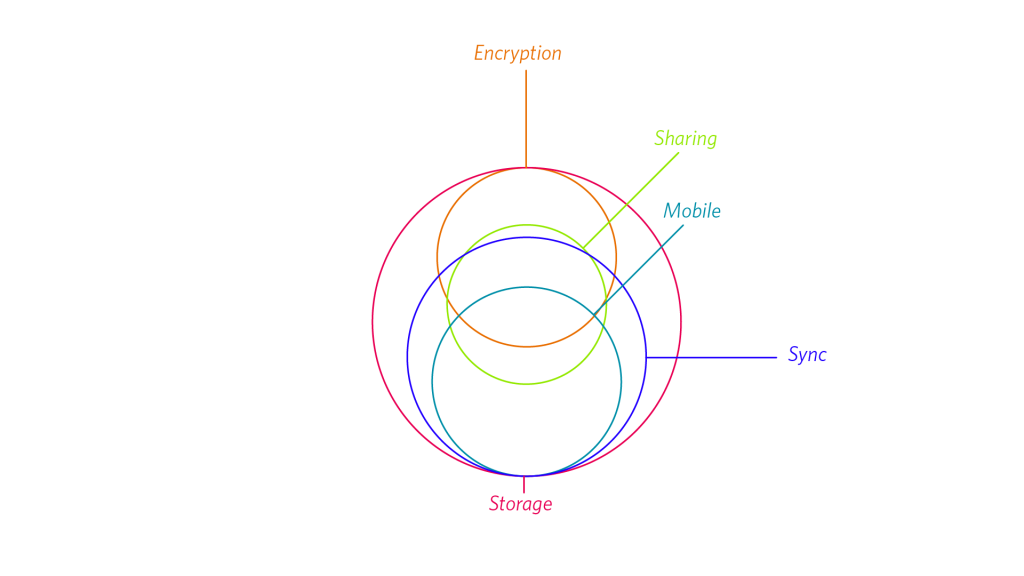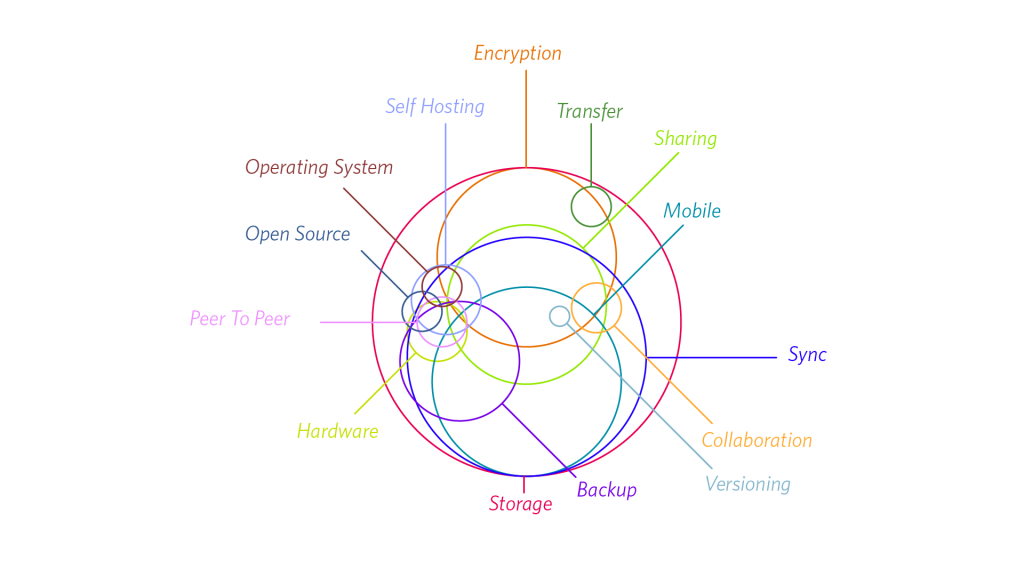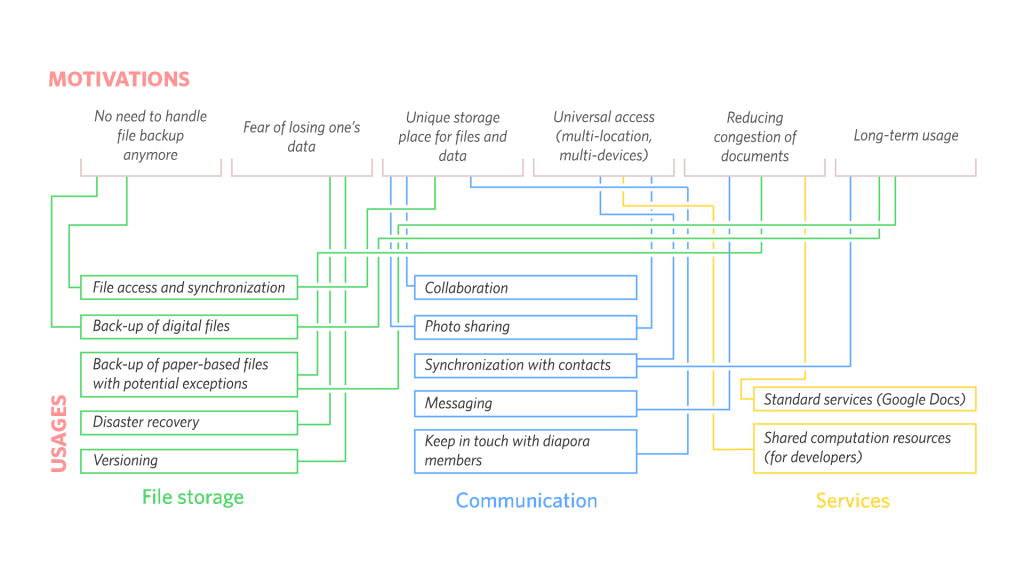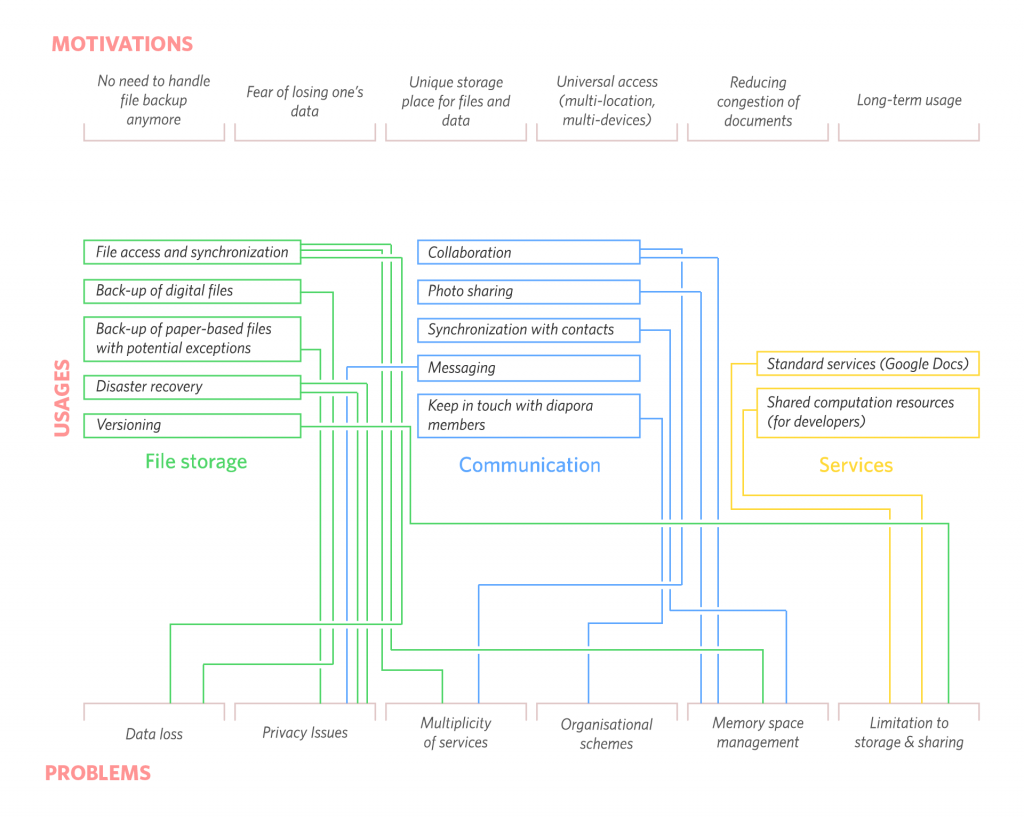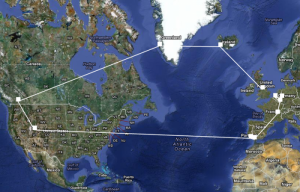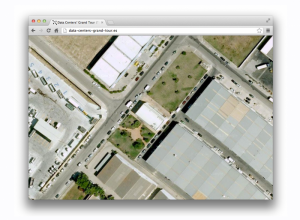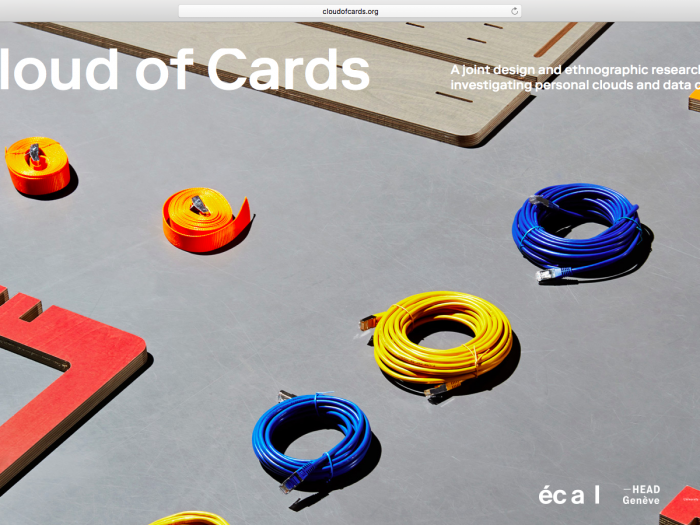Note: the post “Soilless”, an ethnographic research presents the objectives for this workshop.
A first step in our field research approach consisted in investigating various on-line forums in which people comment/complain/discuss cloud computing services (Dropbox, Google Drive, etc.). These boards are fascinating places to observe users’ practices, and the range of topics discussed is quite broad. We quickly discovered that it could enable us to build two typologies about the main usage of cloud computing services, and the motivation of users.
We basically built a corpus of messages that we categorized and represented visually with the following diagrams. They shed some light on cloud computing main use cases, namely the practices the cloud help people undertake. We intend to use them in the upcoming workshops as a stimulus/framing/inspiration for designers.
The list of platforms and forums we investigated are the following: cloud drive (Dropbox, Google Drive, Insync, Copy, Spideroak, Wuala, Skydrive, SugarSync, LogMeIn Cubby, iCloud, Skydrive, Mozy Stash, Box, Syncplicity, Liner notes), filesharing systems(MediaFire, WeTransfer, YouSendIt), personal cloud services (OVH).
